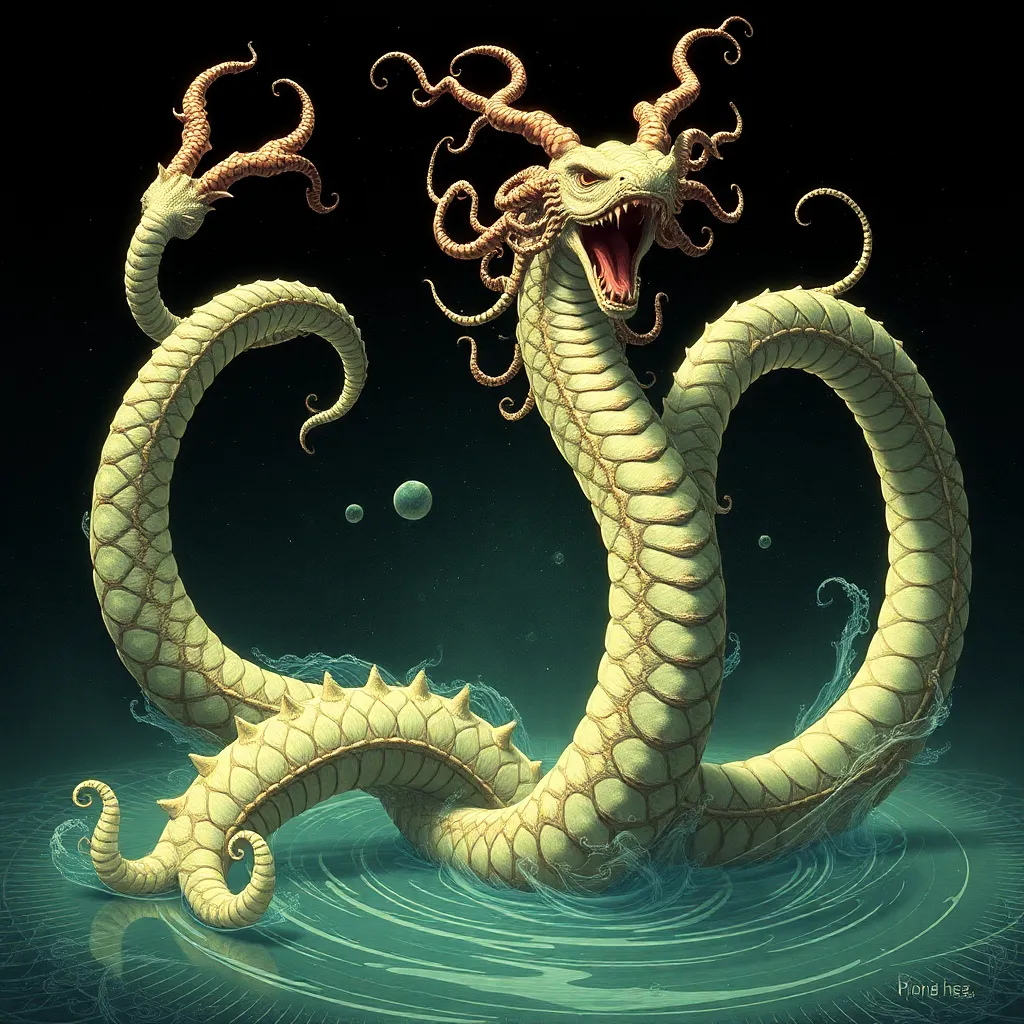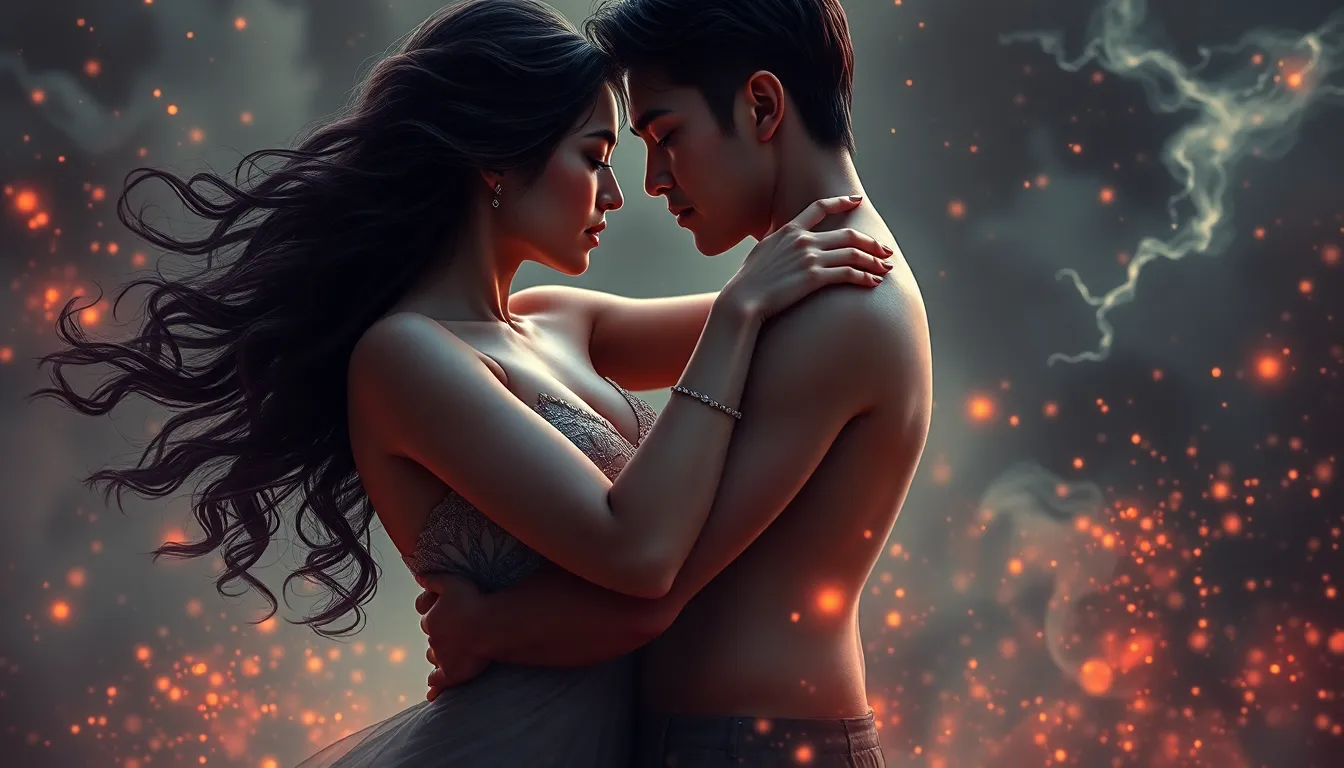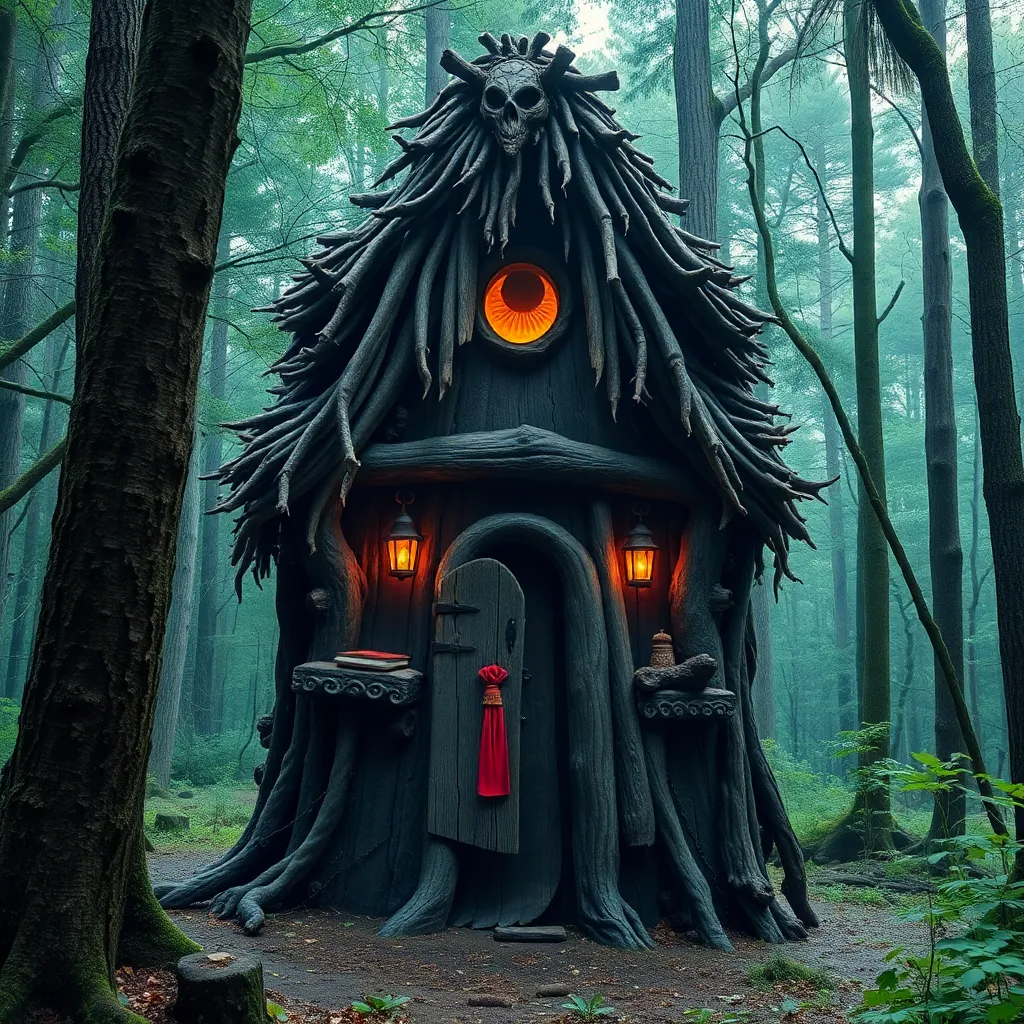The Hydra’s Daughter: Unveiling the Role of Echidna in the Lernaean Hydra’s Myth
I. Introduction
The Lernaean Hydra is one of the most formidable creatures in Greek mythology, known for its many heads and regenerative abilities. This multi-headed serpent has become a symbol of chaos and destruction, often depicted as a formidable adversary to heroes. However, behind the Hydra’s fearsome reputation lies an equally intriguing figure: Echidna.
Echidna, often referred to as the “Mother of Monsters,” plays a crucial role in the myth of the Lernaean Hydra. In this article, we will explore Echidna’s significance in the Hydra myth, examining her origins, her offspring, and her relationship with the legendary beast.
II. The Origins of the Hydra
A. Description of the Lernaean Hydra
The Lernaean Hydra is typically described as a serpent-like creature with multiple heads, often depicted with anywhere from seven to a hundred heads, depending on the version of the myth. Each time one head was severed, two new heads would grow in its place, making it nearly impossible to defeat.
B. Its birth and connection to the underworld
The Hydra was said to have been born from the union of Typhon and Echidna, two monstrous figures of Greek mythology. Its origins are often linked to the swamps of Lerna, a region associated with the underworld and death, emphasizing the creature’s dark and terrifying nature.
C. The Hydra’s place in Greek mythological canon
The Hydra is best known for its role in the Twelve Labors of Hercules, specifically the second labor, where Hercules must slay the creature as part of his quest for redemption. The Hydra’s defeat is a symbol of overcoming chaos and the monstrous aspects of nature.
III. Who is Echidna?
A. Background on Echidna as a mythological figure
Echidna is often portrayed as a half-woman, half-snake creature, embodying the duality of beauty and monstrosity. She is frequently described as the consort of Typhon, the father of all monsters, and a formidable force in her own right.
B. Echidna’s lineage and relationships with other mythological creatures
Echidna is known as the mother of many legendary monsters, including:
- The Nemean Lion
- The Chimera
- The Sphinx
- The Cerberus
This lineage illustrates her pivotal role in the creation of fearsome beings that challenge heroes throughout Greek mythology.
C. Her dual nature: Mother of Monsters and a formidable creature herself
Echidna’s character embodies a complex duality; while she is a nurturing mother, she is also a terrifying monster. This juxtaposition allows her to challenge traditional gender roles, presenting a figure who is both nurturing and dangerous.
IV. The Mother of Monsters
A. Echidna’s role in breeding various mythological beasts
Echidna’s significance extends beyond her relationship with the Hydra; she is the progenitor of many of Greek mythology’s most terrifying creatures. Her offspring serve not only as adversaries to heroes but also as representations of various human fears.
B. Examination of her offspring and their significance in mythology
Each of Echidna’s children carries symbolic weight:
- Nemean Lion: A symbol of strength and invulnerability.
- Chimera: Represents the chaos and unpredictability of nature.
- Sphinx: Embodies the enigma of knowledge and the danger of riddles.
- Cerberus: Symbolizes the boundaries between the living and the dead.
C. The implications of her maternal role in the context of the Hydra
As the mother of the Hydra, Echidna’s role highlights the theme of motherhood intertwined with monstrosity. The Hydra, as her offspring, reflects her influence and the chaotic nature that she embodies.
V. Echidna and the Hydra: A Symbiotic Relationship
A. The connection between Echidna and the Lernaean Hydra
The Hydra’s ferocity and regenerative powers can be directly linked to Echidna’s own monstrous nature. As the mother of the Hydra, she represents the nurturing aspect of monstrosity, showing that even in chaos, there is a form of creation.
B. Analysis of how Echidna contributes to the Hydra’s power and legacy
Echidna’s influence grants the Hydra not only its fearsome abilities but also its place in the pantheon of Greek monsters. The Hydra’s legacy is forever intertwined with Echidna’s, as both represent the challenges that heroes must face.
C. Thematic exploration of motherhood and monstrosity in their relationship
The relationship between Echidna and the Hydra invites a deeper exploration of themes such as motherhood, monstrosity, and the duality of creation and destruction. It poses questions about the nature of maternal influence and the legacy of maternal figures in mythology.
VI. Echidna in the Heroic Narrative
A. The role of Echidna in the myth of Hercules and the Hydra
While Hercules battles the Hydra, Echidna’s presence looms large as the progenitor of this fearsome beast. Her character adds depth to the narrative, as she is not only a mother but also a figure of power and fear.
B. The interplay between heroes and monsters in Greek mythology
The struggle between Hercules and the Hydra exemplifies the classic hero-monster dynamic in Greek mythology. However, Echidna’s existence complicates this narrative, as she represents a maternal force behind the monster.
C. How Echidna’s character challenges traditional hero narratives
Echidna’s role challenges the archetypal hero narrative by introducing a powerful female figure who defies simple categorization as either good or evil. She embodies the complexity of motherhood and monstrosity, enriching the heroic tale.
VII. Modern Interpretations and Cultural Impact
A. The portrayal of Echidna in contemporary literature and media
Echidna has seen a resurgence in modern storytelling, often depicted in novels, films, and television series. Contemporary interpretations seek to explore her character beyond mere monstrosity, delving into themes of feminism and empowerment.
B. The evolution of her character in modern storytelling
Modern portrayals often emphasize Echidna’s strength and agency, allowing her to break free from the traditional constraints of being merely a monster. This evolution reflects a broader cultural shift towards recognizing female figures in mythology.
C. The significance of Echidna’s legacy in discussions of feminism and monstrosity
Echidna’s legacy has become a focal point in discussions surrounding feminism and the concept of monstrosity. Her character challenges the notion that female figures must be purely nurturing or wholly monstrous, instead presenting a complex amalgamation of both.
VIII. Conclusion
Echidna’s role in the Lernaean Hydra myth is multifaceted and profound. As the Mother of Monsters, she not only gives birth to the Hydra but also embodies themes of motherhood, chaos, and the duality of existence. Her character invites us to reflect on the complexities of female figures in mythology and their implications in modern narratives.
Recognizing Echidna’s significance encourages a deeper understanding of the rich tapestry of Greek mythology and highlights the importance of female figures who challenge traditional roles. In a world that often silences women’s voices, Echidna stands as a powerful reminder of the strength and complexity that female figures can embody.


